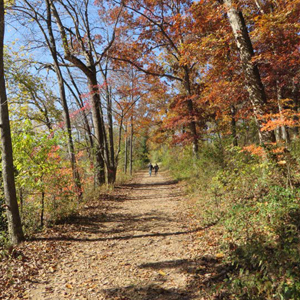Environment
Northwest Arkansas has a rich cultural history. Transportation plans must also take historic and cultural factors into consideration as roadways are aligned or widened. Historic and cultural environmental factors of Northwest Arkansas include the Cherokee Trail of Tears, the Civil War trails and the Old Missouri Road/Old Wire Road/Butterfield Coach Trail. Historic buildings, battlefield sites, archeological sites, and cemeteries are additional examples of historic and cultural factors. It is important that these factors be considered when road alignments, the type of roadways, and the scale of roadways are chosen. For example, a limited access boulevard with a greenway median may be more appropriate than a five-lane highway through a historic-scenic area.
A series of studies and initiatives have been undertaken to address the environmental and cultural factors for preservation or mitigation in the region.

